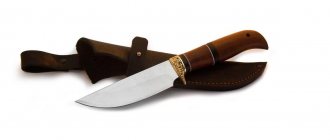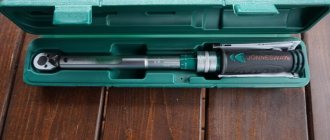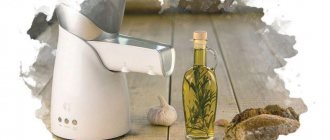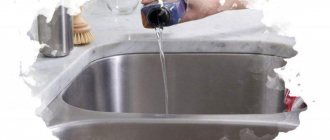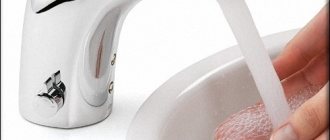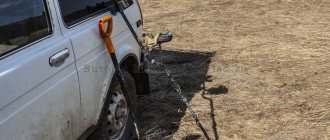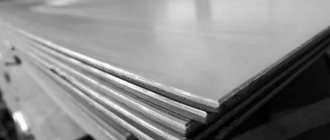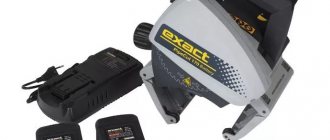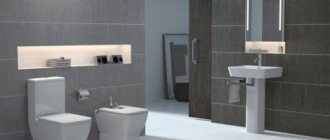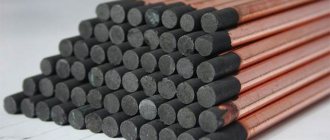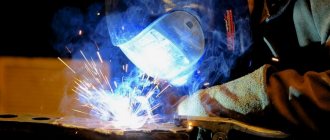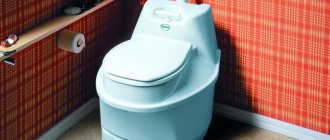Varieties of Euro picket fence
This material is similar in properties to corrugated sheeting. The manufacturing technology is also in many ways similar to the process of producing profiled sheets, but in the case of Euro picket fence, stages of work are added.
In both cases, sheet metal less than 1.5 mm thick is used. Then the relief is formed. During the production of Euro picket fences, these protruding elements (corrugated board stiffeners) are cut off. At this stage, ready-made sheets are used after rolling. When slats (pickets) are cut, the sharp edge is removed (using the rolling method), but sometimes it remains.
The finished pickets are reliably protected from moisture thanks to metal processing using the galvanizing method. Additionally, the Euro picket fence is covered with polymer material. There are types:
- galvanized;
- one-sided;
- bilateral.
The difference between them lies in the degree of protection from mechanical damage and moisture. So, the most preferable is a double-sided European picket fence. It is covered on both sides with polymer material, the edge is also protected. Galvanized and one-sided products do not last long enough, because if the galvanization is damaged, the process of metal rusting begins.
To attach the lamellas, you will need guides (other names: logs or crossbars). The choice is made taking into account the strength of the structure, which affects the total weight of the fence. Thus, there are metal lamellas with a thickness of 0.4 to 1.5 mm. This parameter determines the degree of reliability of the products. Accordingly, the weight of one 1.5 mm thick strip will be much greater than 0.4 mm pickets. This will lead to increased load on the supports. This means that for lamellas of maximum thickness, pillars of a larger cross-section are chosen. But more often they use the 0.5 mm option.
Types of Euro picket fences differ in the shape of the lamellas: rectangular, rounded (upper edge). Both options are in demand. However, more often they use pickets that are rounded on only one side. This allows you to reduce the distance between the foundation (when a strip foundation is being built) or the ground (columnar foundation). If pickets are used, rounded on both sides, then there will be enough space between the slats in the lower part of the fence. As a result, small animals may enter the area.
Color and design
Modern technologies allow you to give the finished product any shade. Some tones are especially popular.
- Green. This color is pleasing to the eye and also goes well with bushes, trees and other vegetation, if present on the site.
- White. It looks impressive, especially if Provence or country style is chosen for the decoration of the area. However, you will have to wash the fence regularly, because all the dirt is visible on the white.
- Brown. It is considered as a wood stain. This color goes well with other shades and is also not too easily soiled.
- Grey. A universal tone that will be appropriate for any design style. Often, owners leave the back side of the fence gray if they purchase a picket fence with a one-sided coating.
In addition, you can choose a color that imitates a certain texture. For example, golden oak, walnut or cherry. It is possible to apply patterns or drawings. In addition, you can alternate colors in a checkerboard pattern, use different tones to decorate the supports and the planks themselves.
The design of the structure may vary depending on the method of placing and connecting the planks. Before installation, you can consider fixation methods and choose the appropriate option.
- Vertical. The classic version with a picket fence is easy to install and familiar to everyone. You can choose the distance between the slats at your discretion, or you can fasten them close to each other, without gaps.
- Horizontal. It is less common than vertical, as it requires more time for installation work and increases material consumption. If this is not critical, then such a design can look quite interesting.
- Chess. The planks are mounted vertically in two rows so that they overlap each other and leave no gaps. This is an option for those who want to provide a private area on their site. This will require twice as much material.
You can creatively approach the design of the top part and make a ladder, wave, arc or herringbone, alternating planks of different heights so that they form the desired figure.
Material characteristics
The main parameters of the European picket fence lamellas are:
- Common profile height values: 6.5-19 mm, and it is believed that increasing this indicator helps to increase the strength of the lamellas.
- Picket width: 70-128 mm; as this indicator increases, the reliability of the product decreases, because in this case, under the influence of wind load, the upper edge of the picket may bend. To avoid this, stiffeners are created, but they differ in size and shape from those inherent in corrugated sheeting.
- The distance between the vertical elements of the Euro picket fence: when choosing, you should rely on the width of the lamellas, the gap should not be greater than this value, otherwise the fence will not fulfill its function - to protect the object from the penetration of strangers, while a sufficient range of distance values: 4-7 cm. Less commonly constructed the fence is made of Euro picket fence, and there is no distance between the vertical elements; in this case, building a continuous fence will require much more money and time.
If you plan to build a “checkerboard” type fence, then in this case the distance between the vertical elements of the European picket fence is determined. The value of this parameter should correspond to 1/2 the width of the lamella. In addition, when determining the sufficient size of a European picket fence, the peculiarities of the location of the bed are also taken into account.
If you do not plan to create a place for planting garden crops next to the fence, you can place the slats closer to each other. Otherwise, they are spaced as far apart as possible (taking into account the maximum distance between vertical elements). The light transmittance of a European picket fence also depends on the overall dimensions of the sections. So, the higher the fence, the more the bed, which is laid out next to the fence, will be protected from the sun. The average height of a European picket fence is 180 cm.
Another characteristic not of an individual profile, but of the entire section is width. The value of this parameter depends on the distance at which the supports will be installed. This size is often 2.5 m. This is the average width of a Euro picket fence. Its increase to 3-3.5 m will lead to an increase in wind load (with a denser arrangement of lamellas). If this size decreases, the strength of the Euro picket fence, on the contrary, will increase.
The section will not bend under the influence of wind load. The ability of a Euro picket fence, which consists of vertical elements located further apart from each other, to withstand wind loads is not taken into account.
Cost of a European picket fence
To find out how much a turnkey-mounted European picket fence costs, check out the price list. It contains prices per linear meter. You can calculate how much it costs to work with materials using an online calculator. In order to get the most accurate calculation, fill out all fields of the form and select the required options from the menu provided.
The program requests:
- fence height;
- footage;
- type of picket fence;
- number of lags.
The cost of a turnkey single-row fence for a dacha made of Euro picket fence is determined in the basic configuration with materials and turnkey work. For hedges 2.5 meters high, three transverse joists are automatically selected. The system itself determines the number of metal pillars required for the construction of the fence on the basis that the installation of supports is necessary every 2.5 meters.
If you want to order a fence made from a two-row European picket fence for your dacha, the price including turnkey installation will be calculated for you personally. On an individual basis, you can also additionally order a calculation of the cost of a fence on brick or concrete pillars, with the construction of a foundation.
The price of a turnkey European picket fence depends on:
- size of the structure: the larger the fence, the more materials it requires, the more expensive the installation will be;
- type of supports: brick, stone and concrete pillars are more expensive than supports made of metal pipes;
- picket type: the cheapest slats are made from thin galvanized corrugated sheets, the most expensive are those with a double-sided polymer coating made from a thick sheet.
The popularity of fences made of Euro picket fences in Moscow is growing; fences made of corrugated sheets are among the best sellers; they are often ordered. This is due to the competitive advantages of such fences.
Profile types
There are options:
- U-shaped:
- M-shaped;
- rectangular;
- rounded.
These options have stiffening ribs (on the top edge). As a result, the strength of the profile increases and it better withstands mechanical and wind loads. Stiffening ribs look like small grooves along the entire product. Moreover, the angles of inclination of the side faces of the euro-picket profile are in most cases the same (more than 90°): 122-130°.
The rectangular and round vertical elements have curved side edges. However, there are varieties of European picket fence slats that do not differ in size from others, but their edges remain sharp. They are not protected by anything except polymer material. As a result, there is a risk of injury to the skin of the hands during the construction of the European picket fence. It is recommended to work with the material wearing gloves. Moreover, the sharp edges are a kind of protection against the penetration of intruders, since they will not be able to grab onto such a profile.
Euro picket dimensions
When manufacturing sections from this material, the dimensions of the profiled sheet are taken into account. So, the existing dimensions of the Euro picket fence:
- width: 2.5-6 m, but longer products are rare, because they are more susceptible to mechanical loads and require the installation of massive guides and supports; in this case, the main size of the profiled sheet (thickness) should be maximum (1. 5 mm);
- height: 1.5-2.2 m, in this interval standard sizes are noted, among them 1.8 and 2 m.
The concept of “standard size” means that such options are often used, because they are best suited for the task at hand (ensuring structural strength, ease of use, for example, in the manufacture of gates, wickets). In addition, standard refers to the dimensions that are specified for launching a production line when products with certain parameters are being produced.
Such features of Euro picket fences somewhat limit the possibilities of consumers. But if desired and the need arises, you can order sections of individual sizes from the manufacturer. As a result, a material with any parameters is obtained.
Types of slats
There are the following types of Euro picket fence:
- "Econova". Unlike its analogues, this type of fence has a lower cost due to the smaller width of the pickets, up to 100 mm, and the number of ribs - up to 14. The height can vary depending on the order of the fence and, as a rule, is made within 1-2 m. Slats installed in increments of 2–10 cm. Installation can be done in a checkerboard pattern. The picket fence is most often used for fencing country houses and dachas.
- "Nova". The width of the pickets up to 120 mm with 15 edges makes it possible to apply various patterns and create a rigid and reliable fence. The protective polymer layer is 20 microns, which prevents the formation of corrosion. There is a matte and glossy finish. It can be installed to fence off dachas or used for protective fencing during the construction of various structures.
- “Barrera” retains all the properties of a European picket fence, but is distinguished by a special method of painting. A special powder coating promotes the appearance of a protective film on the surface of the sheet. The special shapes of the top create a wide range of picket fence choices, and manufacturing in sections simplifies the installation of the fence. The width of 85–130 mm with a size of 1.4–2.2 m allows you to install the picket fence in 2 rows without a gap. In this case, the profiled sheet can be attached evenly or in a semicircle to a brick or metal base.
- "Light-M". The width of the picket fence is 75 mm with 5 ribs, allowing the structure to be light in weight. The fence is installed in one row with a gap of 2–10 cm, or a checkerboard is used. Due to its low cost, in addition to the standard use for fencing country houses, it is also often installed as a temporary structure for fencing construction sites.
Varieties of design
Before you make a fence on your territory, you also need to decide on a design option:
- “convex arc”, the fence is installed in spans, the top of the sections looks like a convex arc;
- “wave”, the fence is distinguished by a wave on each section;
- “herringbone”, the installation pattern of the fence is standard, and the picket fence itself in the upper part resembles the shape of a spruce;
- “concave arc”, installation is carried out in sections, which are made in the form of a concave arc, with the middle parts of the picket fence being the smallest in length;
- “peaks”, the top is made in the shape of a peak. Each section has 5–6 of these outlines installed;
- “trapezoid”, a section curved in the shape of a trapezoid;
- “canyon”, the installation of this metal picket fence occurs in sections, with each picket from the beginning of the sheet being made smaller by one centimeter and, starting from the center, the pickets increase in size again;
- “pyramid”, the top of the plank looks like a pyramid;
- “ladder”, made of strips of longer and shorter lengths, alternating with each other;
- “wings”, the top of the picket fence is similar to the wingspan.
Colors
Euro picket colors
The palette is often based on the shades and colors of the RAL Classic catalog, created back in the last century in Germany. The designation encrypts which color scheme is used as the main one. The first digit of the four-digit code is the color series number. The rest correspond to different shades within the same range of the selected color. In the production of Euro picket fences, steel coated with Printech is also used; accordingly, a catalog of shades of the same name is used. In this case, there is no need to understand code combinations, since the tones are indicated by names.
In addition, different manufacturers may use different catalogs. Each of them has the same colors, but their designations are different. For this reason, when working with a new catalog, you must first study the principle of encrypting the tint series. Most often, Euro picket fences are produced in the following colors:
- white;
- grey;
- green;
- blue;
- burgundy (dark shades of red);
- brown;
- metallic (with a characteristic metallic sheen).
Types of metal picket fence coatings
All types of metal picket fences are coated with a coating that protects the planks from corrosion.
In the simplest case, this is ordinary galvanization , but such a European picket fence is rarely used: it looks ugly, and its service life is low due to the large number of edges. In addition, the density of the zinc coating of such material is often much lower than the standard 225 g/m² .
Factory powder coating is more reliable and aesthetically pleasing. By sintering at high temperatures, paint particles form a uniform coating that is resistant to mechanical damage.
Photo of a U-shaped euro picket fence with protective powder coating
Finally, it is best if the euro picket fence is protected with a special polymer coating . Modern technologies for its application create a durable top layer that reliably protects steel from corrosion, maintaining the original brightness of color for years. Moreover, we are not talking about any specific coating, but about a whole family with different structures and coating polymers. There are six main coverings for Euro picket fences:
- Polyester
is a base protective layer of minimal thickness that preserves the metal for about 20 years. - Matte polyester
is a thick polyester coating with a textured surface and an expected steel life of 30 years. - Pural
is a thick multi-component polymer coating that provides the euro picket fence with a service life of 40–50 years. - Plastisol
is a very thick specific coating that is resistant to mechanical and chemical damage, but does not withstand UV radiation well. Protects metal from corrosion for 30–50 years, depending on environmental conditions. - PVDF
is a durable coating made of polyvinyl fluoride and acrylic that provides the metal with a service life of 30-40 years. - Printech
is a special multi-layer coating that imitates various materials: wood, stone, bronze and others. The top protective layer is either polyester or pural, but due to the total thickness of the coating, the steel will in any case last at least 30 years.
Types of polymer coatings
Details about polymer coatings, their features, applications with a visual comparison table of characteristics.
Most European picket fences are covered with various types of polyester due to the best price-quality ratio. But if you want the fence to last longer and maintain its appearance for many years, choose material protected with pural or planks coated with Printech. They will cost significantly more, but the difference in price will be more than compensated for by a much longer service life of the fence.
Top ↑
Price
The following parameters influence pricing:
- Euro picket fence sizes: the larger the section area, the higher the price;
- metal thickness: the 0.5 mm lamella option is often chosen precisely for this reason (with sufficient strength, the cost is more moderate);
- the type of processing also determines the price of the section; the galvanized version will cost less;
- installation: many manufacturing companies, as well as stores, not only sell Euro pickets of different sizes, but also offer services for their installation; in this case, 2 prices are indicated: nominal (for the product) and total (together with installation services).
When the cost of materials is studied, a picket fence made of corrugated board can be purchased for 80-90 rubles/linear. m.
Prices for a metal picket fence
| Fence height, m | Coloring | Distance between picket fences 3 cm | Distance between picket fences 2 cm | Checkerboard (double-sided fence with a distance between picket fences of 8-9 cm) |
| 1,5 | On the one side | 1445 RUR/m | 1535 RUR/m | 1995 RUR/m |
| 1,5 | On both sides | 1575 RUR/m | 1685 RUR/m | 2195 RUR/m |
| 1,8 | On the one side | 1565 RUR/m | 1675 RUR/m | 2165 RUR/m |
| 1,8 | On both sides | 1715 RUR/m | 1845 RUR/m | 2395 RUR/m |
| 2,0 | On the one side | 1645 RUR/m | 1745 RUR/m | 2245 RUR/m |
| 2,0 | On both sides | 1795 RUR/m | 1945 rub./m | 2530 rub./m |
| 1,5 | Under the tree on one side | 1895 RUR/m | 2045 RUR/m | 2665 RUR/m |
| 1,8 | Under the tree on one side | 2075 rub./m | 2245 RUR/m | 2925 RUR/m |
| 2,0 | Under the tree on one side | 2205 RUR/m | 2395 RUR/m | 3115 RUR/m |
What to look for when choosing
If you plan to purchase a Euro picket fence, take into account the dimensions of the lamella: profile height, angles of inclination of the edges, width of the product and its length. Often the last 2 parameters are indicated in company catalogs. However, if you plan to build a durable structure with minimal gaps, you need to clarify the profile height. Other options:
- metal thickness (recommended size 0.5-1.0 mm);
- coating;
- profile shape, its height;
- edge quality: it is recommended to purchase Euro picket lamellas with rolled edges; the dimensions remain the same, but installation safety increases and the service life of the structure increases.
Pay attention to the brand of the product. The products of Grand Line, Barrera Grande, Nova, TPK Center Metalroofing, FinFold, UNIX are popular.
Advantages and disadvantages of Euro picket fence
Positive qualities of lamellas:
- attractiveness: if you choose the right picket size and coating color, you can focus on the fence;
- strength: metal structures last much longer than wooden ones and can withstand higher loads;
- easy installation, as the slats are easily attached to the joists using self-tapping screws and a screwdriver;
- a large selection of options, different in length, width, color, profile shape;
- light weight of one lamella, as a result, it will not be difficult to assemble a fence of the required size from a European picket fence;
- ease of transportation and storage;
- the type of fence familiar to many is a picket fence, but with improved characteristics;
- If you choose European picket fence slats with suitable parameters (painted) for the fence, you won’t have to take care of them for a long time.
Profile slats also have disadvantages. Thus, they note low resistance to vandalism - due to the small thickness, the fence can be damaged. In addition, using products without rolling can cause injury. Another disadvantage is the need to use a press washer, otherwise there is a risk of damaging the coating.
